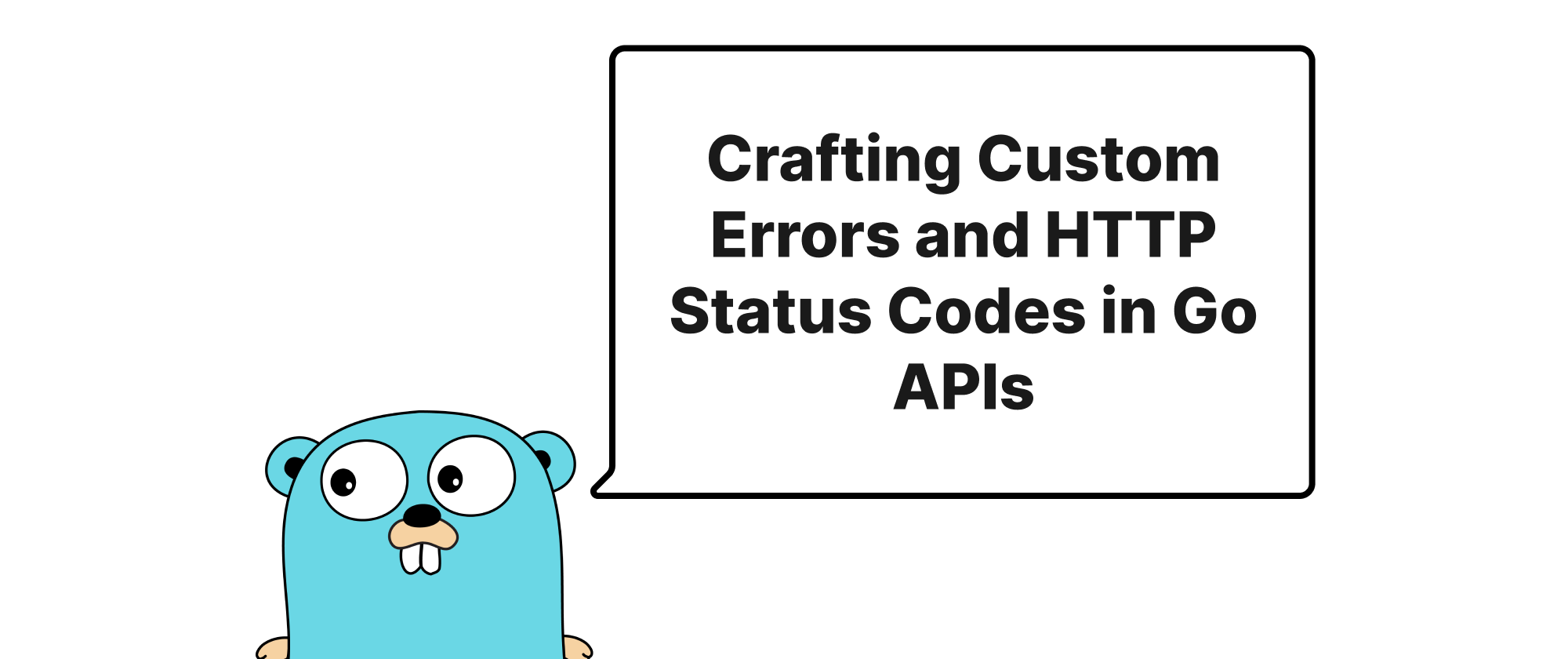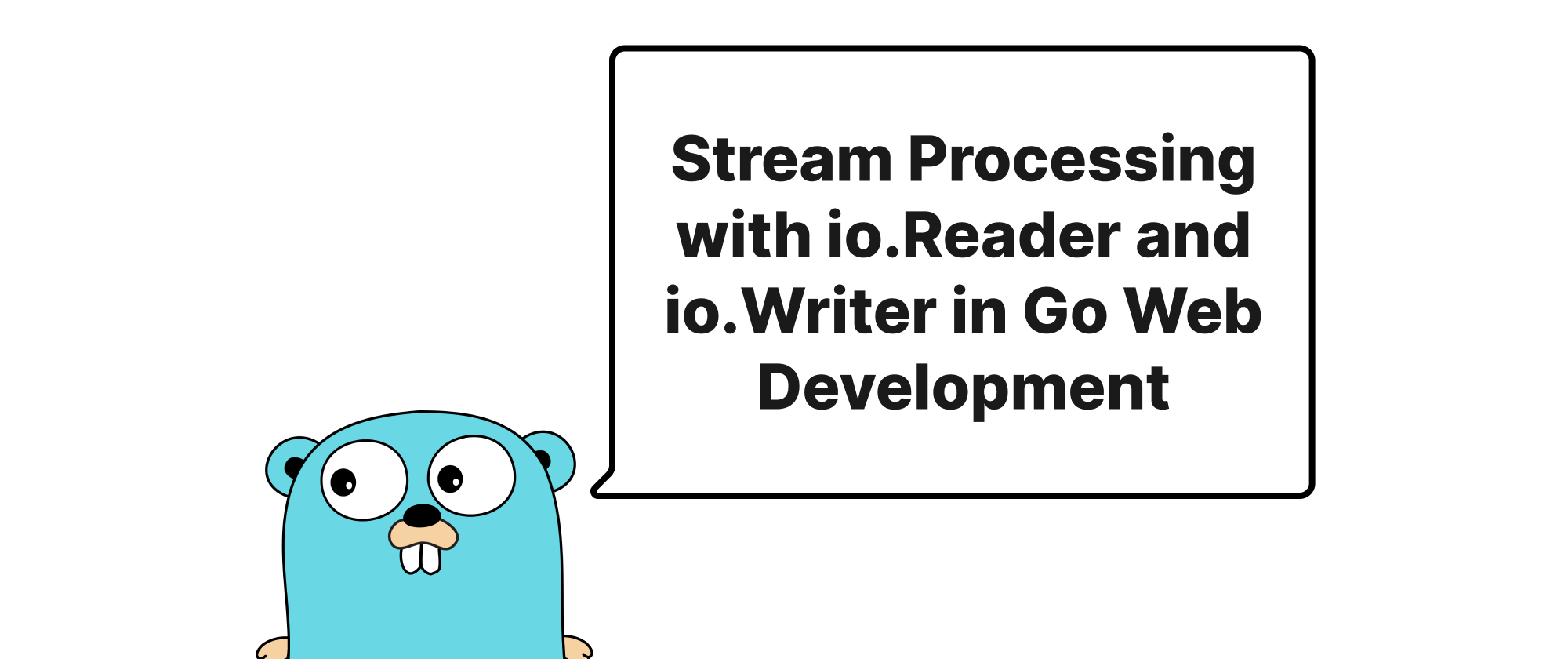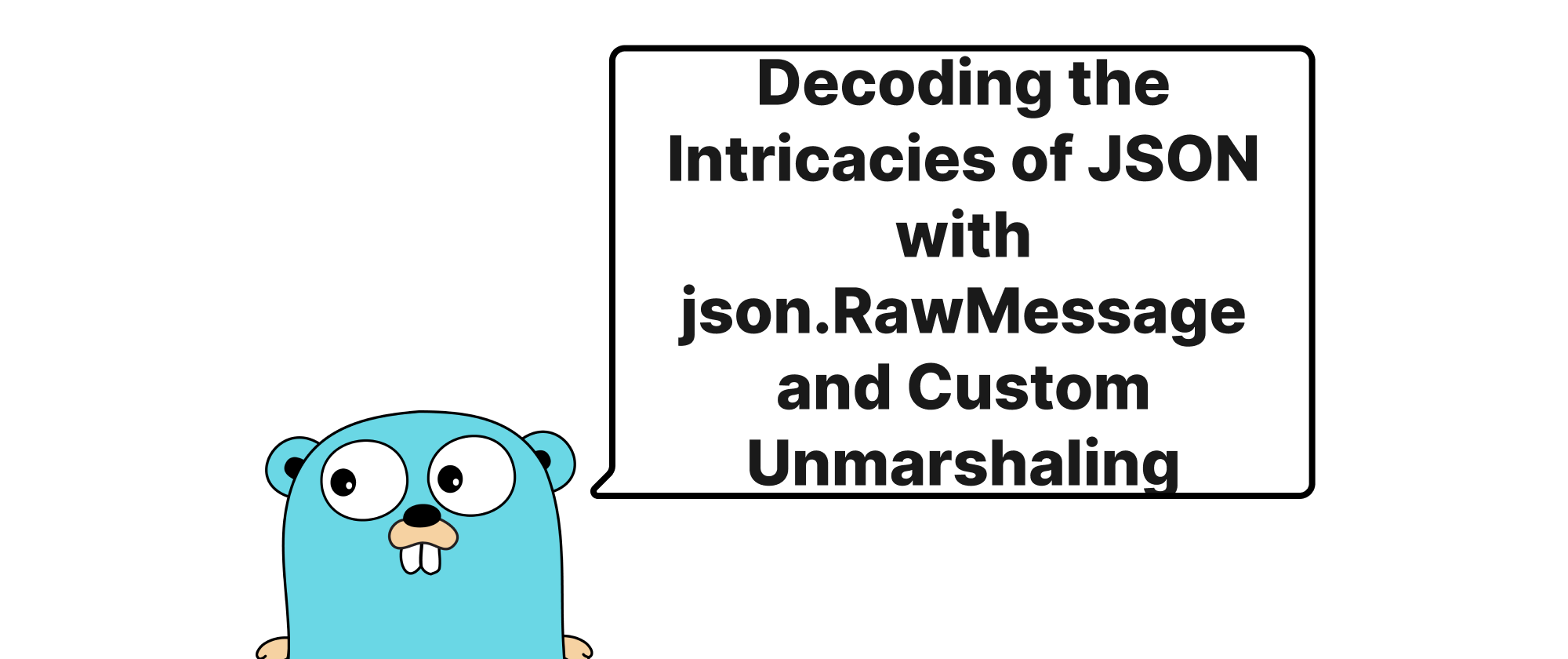Crafting Custom Errors and HTTP Status Codes in Go APIs
Grace Collins
Solutions Engineer · Leapcell

Introduction
Building robust and maintainable APIs is a cornerstone of modern software development. A critical aspect often overlooked, or at least not given its due, is effective error handling. When your Go API encounters an issue, simply returning a generic "500 Internal Server Error" can leave clients guessing, leading to a poor developer experience and challenging debugging cycles. Instead, providing specific, actionable error messages coupled with precise HTTP status codes significantly improves the usability and diagnostic capabilities of your API. This article explores how to create custom error types in Go, and more importantly, how to gracefully translate these internal errors into meaningful HTTP status codes for your API consumers, fostering a more transparent and user-friendly interaction.
Understanding the Core Concepts
Before we dive into the implementation, let's briefly define some key terms that will underpin our discussion:
- Error Interface (Go): In Go, errors are just values that implement the built-in
errorinterface, which has a single method:Error() string. This simplicity is powerful, allowing for highly flexible custom error representations. - Custom Error Type: Beyond the basic
errorinterface, a custom error type is a user-defined struct that implements theerrorinterface. This allows you to embed additional context, like an error code, a user-friendly message, or even a stack trace, directly within the error itself. - HTTP Status Code: A three-digit number in the HTTP response header indicating the status of the server's attempt to satisfy the client's request. These codes are categorized (e.g., 2xx for success, 4xx for client errors, 5xx for server errors) and provide a standardized way to communicate the outcome of an API call.
- Error Mapping: The process of translating an internal application error (which might be a custom Go error type) into an appropriate HTTP status code and a corresponding error message for the API client.
Principles of Elegant Error Mapping
The goal is to provide enough information to the client to understand what went wrong, without exposing sensitive internal details. This involves:
- Specificity: Distinguish between different types of errors (e.g., invalid input, unauthorized access, resource not found).
- Context: Provide a clear, concise message that describes the problem.
- Actionability: Where possible, guide the client on how to resolve the issue.
- Standardization: Use well-known HTTP status codes to leverage existing client-side error handling patterns.
Implementing Custom Errors and Mapping
Let's illustrate these principles with a practical example. Imagine an API for managing user accounts.
1. Defining Custom Error Types
We'll start by defining custom error types to represent specific API error conditions.
package user import ( "fmt" "net/http" ) // UserError represents a custom error for user-related operations. type UserError struct { Code string // A unique application-specific error code Message string // A user-friendly message Status int // The corresponding HTTP status code Err error // The underlying error, if any } // Error implements the error interface for UserError. func (e *UserError) Error() string { if e.Err != nil { return fmt.Sprintf("[%s] %s: %v", e.Code, e.Message, e.Err) } return fmt.Sprintf("[%s] %s", e.Code, e.Message) } // Unwrap allows checking for the underlying error. func (e *UserError) Unwrap() error { return e.Err } // Standard custom error instances var ( ErrUserNotFound = &UserError{Code: "USER-001", Message: "User not found", Status: http.StatusNotFound} ErrInvalidCredentials = &UserError{Code: "AUTH-002", Message: "Invalid credentials provided", Status: http.StatusUnauthorized} ErrUserAlreadyExists = &UserError{Code: "USER-003", Message: "A user with the provided email already exists", Status: http.StatusConflict} ErrInvalidInput = &UserError{Code: "VALID-004", Message: "Invalid request payload or parameters", Status: http.StatusBadRequest} ErrInternal = &UserError{Code: "SERVER-005", Message: "An unexpected error occurred", Status: http.StatusInternalServerError} ) // NewUserErrorFromHttpStatus creates a general UserError from an HTTP status code and a message. func NewUserErrorFromHttpStatus(status int, message string) *UserError { code := fmt.Sprintf("HTTP-%d", status) // You might have a more sophisticated mapping for codes here return &UserError{Code: code, Message: message, Status: status} }
In this code, UserError is our custom error struct. It includes Code for internal identification, Message for the API client, Status for the HTTP response, and an optional Err for wrapping underlying Go errors. We also define several predefined UserError instances for common scenarios.
2. Returning Custom Errors from Business Logic
Now, our service layer can return these custom errors.
package service import ( "database/sql" "errors" "your_module/your_app/user" // Assuming your custom errors are here ) type UserService struct { // ... dependencies } func (s *UserService) GetUserByID(id string) (*user.User, error) { // Simulate data store interaction if id == "" { return nil, user.ErrInvalidInput.WithErr(errors.New("user ID cannot be empty")) } if id == "nonexistent" { return nil, user.ErrUserNotFound } // Simulate a database error if id == "db_error" { return nil, user.ErrInternal.WithErr(sql.ErrConnDone) } return &user.User{ID: id, Name: "John Doe"}, nil } // Add a helper method to UserError for convenience func (e *UserError) WithErr(err error) *UserError { e.Err = err return e }
Notice how we use errors.Is or errors.As (Go 1.13+) to check and wrap errors. The WithErr helper method allows us to easily add an underlying error for internal logging while keeping the UserError structure intact for API responses.
3. Mapping Errors in the HTTP Handler
The final piece is to translate these custom errors into HTTP responses in your API handler.
package api import ( "encoding/json" "errors" "log" "net/http" "your_module/your_app/service" "your_module/your_app/user" // Assuming your custom errors are here ) type API struct { userService *service.UserService } func NewAPI(s *service.UserService) *API { return &API{userService: s} } // ErrorResponse defines the structure for API error messages type ErrorResponse struct { Code string `json:"code"` Message string `json:"message"` } func (a *API) GetUserHandler(w http.ResponseWriter, r *http.Request) { userID := r.URL.Query().Get("id") u, err := a.userService.GetUserByID(userID) if err != nil { var userErr *user.UserError if errors.As(err, &userErr) { // It's one of our custom UserErrors log.Printf("Client error: Code=%s, Message=%s, HTTP Status=%d, UnderlyingErr=%v", userErr.Code, userErr.Message, userErr.Status, errors.Unwrap(userErr)) w.Header().Set("Content-Type", "application/json") w.WriteHeader(userErr.Status) json.NewEncoder(w).Encode(ErrorResponse{Code: userErr.Code, Message: userErr.Message}) return } // This handles unexpected errors that aren't our custom UserError type. // We still want to return a generic 500 but log the actual error for debugging. log.Printf("Internal server error: %v", err) w.Header().Set("Content-Type", "application/json") w.WriteHeader(http.StatusInternalServerError) json.NewEncoder(w).Encode(ErrorResponse{Code: user.ErrInternal.Code, Message: user.ErrInternal.Message}) return } // Success case w.Header().Set("Content-Type", "application/json") w.WriteHeader(http.StatusOK) json.NewEncoder(w).Encode(u) // Assuming user.User can be marshaled directly }
In the handler, we use errors.As to check if the returned error is our custom *user.UserError. If it is, we extract its Status, Code, and Message to construct a precise HTTP response. For any other unexpected errors, we default to http.StatusInternalServerError and log the full error for internal debugging, without exposing sensitive details to the client.
Application Beyond a Single Type
This pattern scales well. You might have OrderError, ProductError, etc., each with their own specific codes and HTTP status mappings. A centralized error-handling middleware or a dedicated ErrorMapper interface could further streamline this process for larger applications.
// Example of a generalized error mapper interface type HTTPErrorMapper interface { MapError(err error) (statusCode int, responseBody interface{}) } // Example usage in middleware func ErrorHandlingMiddleware(mapper HTTPErrorMapper, next http.Handler) http.Handler { return http.HandlerFunc(func(w http.ResponseWriter, r *http.Request) { defer func() { if rvr := recover(); rvr != nil { // Handle panics as internal server errors log.Printf("API Panic: %v", rvr) statusCode, response := mapper.MapError(user.ErrInternal.WithErr(fmt.Errorf("%v", rvr))) w.WriteHeader(statusCode) json.NewEncoder(w).Encode(response) return } }() next.ServeHTTP(w, r) }) }
Conclusion
Creating custom error types in Go APIs, coupled with a deliberate strategy for mapping them to HTTP status codes, is a powerful approach to building user-friendly and debuggable services. By providing specific error codes and messages, you empower API consumers to react intelligently to problems, while your backend benefits from clear internal error logging. This method elevates your API from merely functional to truly robust and professional. Ultimately, well-defined custom errors are the foundation of empathetic API design.


